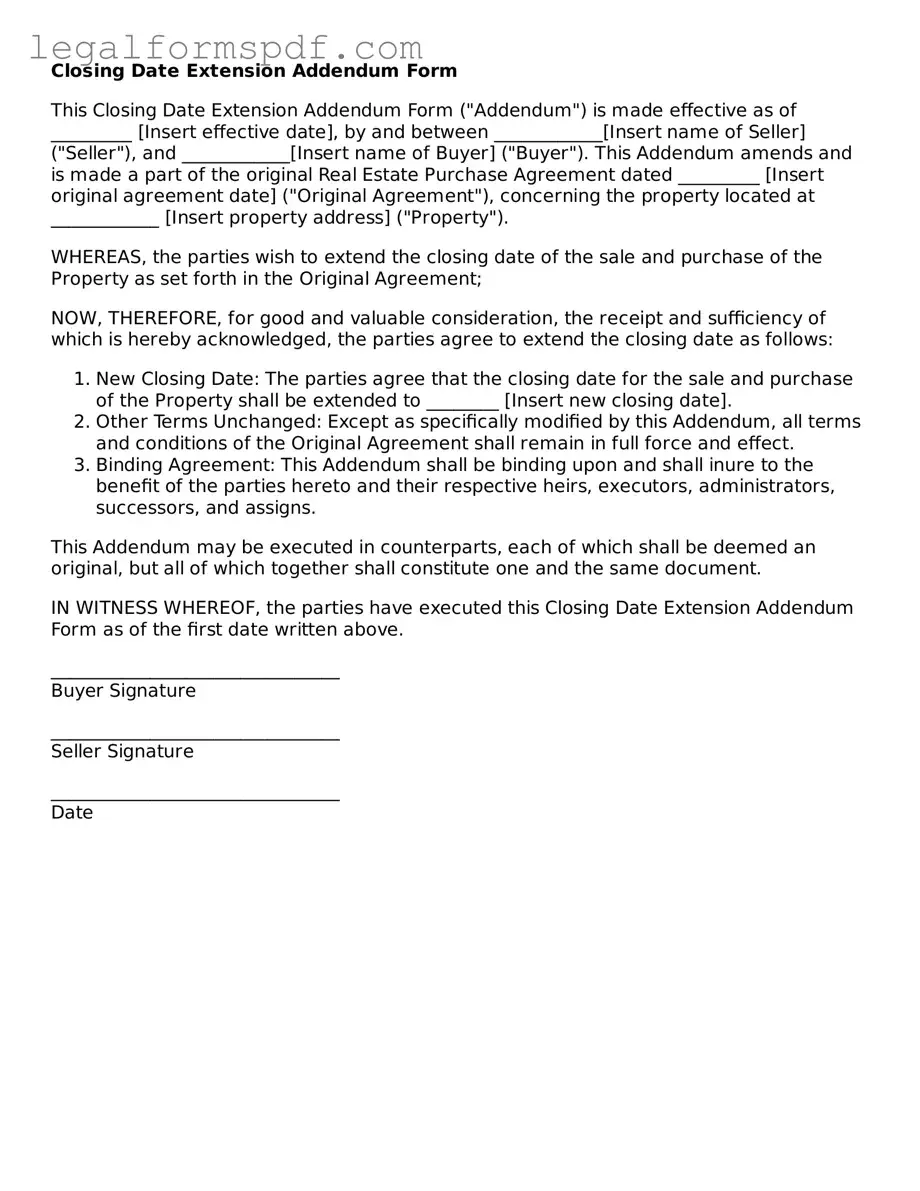What is a Closing Date Extension Addendum?
A Closing Date Extension Addendum is a document used in real estate transactions to officially delay the closing date of a property sale. This form is added to the original purchase agreement and outlines the new agreed-upon date for closing, allowing both the buyer and seller more time to meet the conditions of the sale.
When might one need to use this form?
This form may be needed in several circumstances, such as when either party requires additional time to secure financing, if there are unresolved issues following a home inspection, or if there are delays in obtaining necessary documents or approvals. It ensures that both parties have a mutual understanding of the new timeline for the sale's completion.
Who initiates the process for a closing date extension?
Typically, the party that requires more time to fulfill their obligations under the purchase agreement will initiate the process for a closing date extension. They must communicate their need for an extension to the other party and propose a new closing date, which must then be agreed upon by both parties.
How is the new closing date decided?
The new closing date is decided through negotiations between the buyer and the seller. It takes into consideration the time required to resolve any outstanding issues, such as financing, inspections, or document retrieval. Both parties must agree to the new date for it to be effective.
Does the Closing Date Extension Addendum require legal review?
While not always mandatory, having a legal professional review the Closing Date Extension Addendum is highly recommended. This ensures that the document is in compliance with local laws, properly articulated, and that it protects the rights and interests of both parties involved in the transaction.
What happens if the parties cannot agree on a new closing date?
If the parties cannot agree on a new closing date, the sale may be at risk of falling through. Depending on the terms of the original purchase agreement, either party may have the option to withdraw from the sale under certain conditions, potentially involving the forfeiture of any earnest money deposit by the buyer.
Are there any legal repercussions for not adhering to the new closing date?
Yes, failing to adhere to the new closing date, as agreed in the addendum, can have legal repercussions. This could include the cancellation of the purchase agreement, loss of earnest money, or other penalties as outlined in the original contract and the addendum. It underscores the importance of both parties committing to the extended timeline.
Can more than one extension be granted?
It is possible for more than one extension to be granted if both parties agree to further delay the closing date. Each extension would require a new Closing Date Extension Addendum to be completed, signed, and dated by both the buyer and the seller, indicating their agreement to the new terms.
What should be done after the Closing Date Extension Addendum is signed?
After the Closing Date Extension Addendum is signed, a copy should be provided to all parties involved in the transaction, including any lending institutions and real estate agents. The addendum becomes a part of the official contract documents, and all parties should proceed with fulfilling their obligations by the new closing date.
